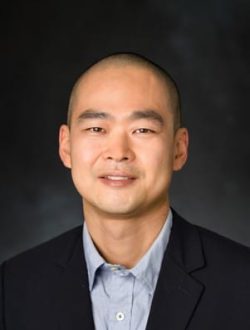
- This event has passed.
ESE Spring Seminar – “Versatile RF Interconnects and Electronics for Extreme Environment Sensing and Communications”
March 3 at 11:00 AM - 12:00 PM
Future emerging applications like extreme environment electronics, high-performance computing, space sensing, and brain-machine interfaces share a critical goal: massive bandwidth and deployment scalability. To this end, my research group is investigating energy-efficient and scalable sensing and communication techniques, emphasizing circuits, advanced packaging, and signal processing innovations for the above applications.
To begin with, I will briefly discuss technology gaps in information-carrying wiring harnesses and illustrate the new use cases of millimeter-wave dielectric fibers and short-distance wireless interconnects as alternative mediums, mainly as thermal isolating channels. Then, I will describe the challenges of hypersonic radio interference and harsh environment antenna remoting systems for the DoD and aerospace industries. I will introduce the high-temperature electronics framework as my future work to address the above challenges, focusing on high-temperature metrology and scalable signal-harnessing techniques at millimeter-wave frequencies. To show the feasibility of the new methods, I will illustrate the ceramic fiber’s capability of electromagnetic wave propagation, extreme heat tolerance, and extreme heat isolation, assisted by automatic gain-controlled millimeter-wave CMOS transceivers.
In the second part, I will discuss the need for large-scale cryogenic interconnects for future high-performance computing and demonstrate the potential adoption of wireless interconnects between cryogenic devices and room-temperature electronics. As an initiative, our lab demonstrated the feasibility of removing thermally loaded wires/connectors between 7K and 290K thermal break and efficiently packing more data in a millimeter-wave carrier enabled by multi-level signaling and digital pre-distortion in CMOS technologies. As a part of the scalable interconnect theme within high-performance computing, I will also describe my collaborative efforts with academic and industry partners on massively scalable RF connectors for future artificial intelligence and data centers.
Lastly, I will elaborate further on my research activities in space sensing and brain-machine interface, where massive scalability matters most. I will discuss their challenges, opportunities, and future directions.

Rod Kim
Assistant Professor, Stevens Institute of Technology
Rod Kim graduated from UCLA with a Ph.D. in electrical engineering. He is an assistant professor at the Stevens Institute of Technology and a research associate at the National Institute of Standards and Technology (NIST). Before that, he developed low-noise sensors and communication systems using CMOS technologies at the Jet Propulsion Laboratory (JPL) and space-based power-beaming receivers at the U.S. Naval Research Laboratory (NRL). Rod designed the first CMOS-centric 183-GHz heterodyne spectrometers in JPL’s balloon instrument that successfully measured the water vapor spectral line (as a climate regulation indicator) in the Earth’s stratosphere. He received an NSF CAREER Award in 2025 and a DARPA Young Faculty Award in 2022. He has been an associate editor for the IEEE Transactions on Microwave Theory and Techniques since 2022 and a track editor for the IEEE Journal of Microwaves since 2025.
